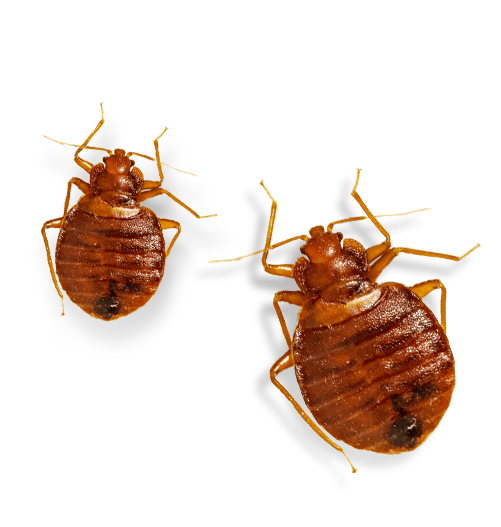Local Bed Bug Exterminator: DC Heat Treatment Solutions Available
Local Bed Bug Exterminator: DC Heat Treatment Solutions Available
Blog Article
Discovering the Science Behind Bed Insect Warmth Treatments as a Lasting Pest Management Approach
In the world of insect administration, the mission for sustainable and efficient remedies stays a continuous search. One such technique that has gotten grip in current years is making use of warmth therapies to deal with bed pest invasions. By harnessing the science behind thermal fatality factors for these persistent insects, warm therapies use a promising option to traditional chemical-based strategies. The intricacies of how warm effectively eliminates bed insects and the broader ramifications for sustainable parasite monitoring practices make this a topic worth exploring further.
Bed Pest Heat Therapy Process

Thermal Fatality Factor for Bed Pests
Revealing bed pests to elevated temperatures beyond their thermal resistance variety is important for accomplishing effective obliteration in warm therapy procedures. The thermal death factor for bed bugs refers to the temperature at which these insects can not endure. Research study shows that bed insects start to die when exposed to temperatures over 113 ° F(45 ° C) for a sustained period. As the temperature enhances, so does the death price of bed bugs. At around 118 ° F(48 ° C ), bed bugs start to die rapidly, with a mortality rate of nearly 99% within minutes of direct exposure. This demonstrates the level of sensitivity of bed pests to heats and highlights the performance of warmth treatments in eradicating infestations. By reaching and preserving temperatures above the thermal death point for bed insects, parasite management experts can make sure comprehensive removal of bed bug populations, including hard-to-reach locations where chemical treatments might be less effective. Comprehending the thermal fatality factor for bed pests is necessary for applying successful warmth therapy approaches and accomplishing lasting insect management outcomes.
Benefits of Warm Treatments
Having actually established the important thermal fatality point for bed pests, it is important to currently discover the significant benefits that warm therapies use in properly getting rid Source of these resilient insects. One of the main advantages is that warm can pass through deep into holes and cracks where bed bugs hide, guaranteeing that even the most hard-to-reach areas are heated up to deadly temperatures.
Furthermore, warmth treatments are eco friendly and safe, making them a sustainable bug management technique. Unlike chemical pesticides, warmth treatments do not leave damaging residues that can present threats to human health and wellness or the setting. This facet is especially important in delicate atmospheres such as medical facilities, schools, and property locations where chemical use may not be desirable.
Additionally, warmth therapies have a high success rate in getting rid of bed insect invasions in a solitary treatment, lowering the demand for numerous visits and reducing disturbance to residents. This efficiency not just saves money and time however additionally offers comfort to those taking care of bed bug problems.
Effectiveness of Warm Therapy

Study research studies have continually demonstrated the performance of warm therapies in accomplishing a high rate of bed insect mortality. Appropriately conducted warmth treatments can get to all the crevices and fractures where bed bugs might be nurturing, making sure a comprehensive technique to elimination. Moreover, warmth treatments have actually the added benefit of eliminating bed bug eggs, which are commonly resistant to standard chemical therapies. On the whole, the effectiveness of warm therapies in eradicating bed insect problems makes them a lasting and reliable bug monitoring strategy.
Lasting Bug Management Perks
Executing sustainable pest monitoring techniques uses long-lasting benefits for both the environment and public wellness. By making use of techniques such as heat therapies for parasite control, we can minimize the reliance on hazardous chemical pesticides that can have adverse results on environments click here now and human health and wellness - DC exterminator. Sustainable parasite administration techniques aid in protecting biodiversity by targeting particular pests without damaging non-target organisms, therefore preserving a balanced environment
In addition, sustainable parasite administration practices add to the overall health and wellness and well-being of the general public. By minimizing direct exposure to toxic chemicals made use of in conventional parasite control methods, warm treatments supply a safer option for pest administration in residential, industrial, and public rooms. This reduction in chemical use additionally helps in protecting against pesticide residues from polluting dirt, water, and air, guarding environmental high quality.
Verdict
To conclude, bed insect warmth treatments have been shown to be a reliable and lasting bug monitoring strategy. The thermal death factor for bed pests makes them susceptible to heat treatments, which have many benefits over typical chemical treatments. The effectiveness of warm therapies in removing bed pest problems while minimizing environmental effect highlights the capacity of this approach as a lasting solution for pest control.
The bed insect warm therapy procedure entails elevating the temperature level within ravaged locations to a level find more information that effectively eliminates bed bugs and their eggs. By reaching and maintaining temperatures above the thermal death point for bed insects, bug monitoring specialists can make certain thorough removal of bed pest populaces, consisting of hard-to-reach locations where chemical therapies might be much less efficient. One of the main advantages is that heat can penetrate deep into cracks and holes where bed insects hide, guaranteeing that even the most hard-to-reach areas are warmed to dangerous temperature levels. Unlike chemical treatments that might leave behind immune populaces, warm treatments offer a ecologically friendly and safe option that can permeate deep into furnishings, walls, and other hard-to-reach locations where bed insects hide.
The thermal fatality point for bed bugs makes them at risk to warm treatments, which have countless benefits over conventional chemical treatments.
Report this page